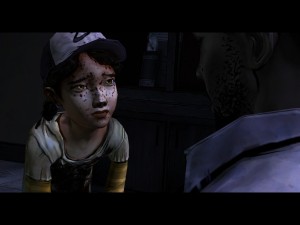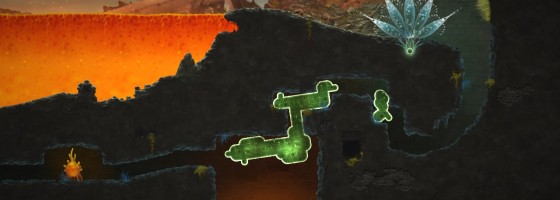I recently put up a video spotlight of the game Mushroom 11: A puzzle/platformer from Untame that is very unique in its design. However, during the video I commented that I felt that I wanted to play as much of it now, as I didn’t think I would come back to it, even to finish it. This isn’t the first time this has happened and I wanted to talk about this phenomenon of one-time game design.
Uniquely Limited:
One-time game design refers to titles where it seems the gameplay doesn’t seem to be sustained over multiple play-throughs or even just plays. It’s strange to talk about games this way, as most one-time games are not bad titles; the problem is that they’re too unique for their own good.
We’ve talked about the issues of pacing in game design before and how certain games have trouble sustaining the experience. One-time game design is where the entire game experience is based simply off of one mechanic and never goes anywhere else with it. We typically see this in indie titles that attempt to make a retro game or in Mushroom 11’s case: A game that has never before seen gameplay.
Unique games are great, with Portal being a great example of what you can do with something different. The problem is that the more unique your game is, the more you’re limiting what you as the designer can make with it and what the player can experience. This is why games that are built around unique mechanics are never long experiences, as the designers just can’t come up with as many different challenges compared to generalized mechanics.
Games like Super Meat Boy or Mario featured a variety of levels as the platformer genre gives you a wide berth in terms of obstacles and level design. Even though Meat Boy and Mario may not have complex movesets, they offer flexibility to create different challenges and keep the gameplay varied. However, when you have a game like Portal or Mushroom 11, where the design is built around one specific mechanic, that’s a big limiting factor.

Super Meat Boy’s moveset never changes over the game, but pushes the player in different ways thanks to the variety of situations and hazards
If the mechanic is built around one element, you can’t really create brand new means of using it and that means you are limited in level design as well.
With Portal 1 and 2, the developers could have easily padded the game out by repeating puzzle elements and extending the game, but they would have been called out for recycling content.
In Mushroom 11, because of how limited/unique the mechanic of controlling your mushroom, every puzzle and situation feels exactly the same.
There is only one form of interaction, one mechanic at play, and that means no matter what you do to the environment or enemy design, the player only has one answer to every situation.
There have been other games I’ve played just like Mushroom 11: Where a unique mechanic is the only major selling point and the levels all start to feel really similar. Without having some kind of hook to keep going, it makes it very hard to be motivated to come back to the game to finish it.
Now I know what some of you must be thinking right now: Isn’t every game built around a core mechanic or gameplay? And that’s true, but there are several ways to keep the gameplay interesting and avoid the One-time curse.
Spicing things up:
When it comes to keeping the player invested in a game, there are several options at the developer’s disposal. The first one is obvious: more gameplay. The more mechanics and systems for the player to use, means more content and challenges for the developer. Many games like to change things up with mini-games, special sections, boss fights, etc; anything to break up the normal routine.
Plants vs. Zombies is a perfect example of this, with the developers adding in mini-games and new content to keep the player engaged. Going back to the Mario and Super Meat Boy examples, while the player’s moveset didn’t change through play, the types of situations and enemies did. Again, the moveset of a platformer allows the designer to change how the game plays by changing how the levels are structured; every new obstacle or enemy presents something different for the player.

A great story can do a lot to motivate someone to keep going, regardless of the depth of the actual gameplay
The next one is a story; meaning that the game presents an interesting tale to keep the player invested. Some obvious examples would be the games from Telltale, Dragon Age, Mass Effect and we could go on and on.
Coming up with a great story is something that is a little too big to talk about in this post, but we’ve seen many games with amazing storylines that managed to captivate the audience without needing complex or changing gameplay.
Finally is a more abstract one: Rewards. Rewards mean anything that gives the player something new, and this could be achievement-based, meta-game or even simple progression that unlocks new content in-game.
The point is that the player is continuing to play a game because there is some carrot on the stick for them to go after. Payday 2 has been making good use of this with an ever growing amount of achievements and unique tasks for their playerbase to go after; the same goes for Team Fortress 2.
Keep it going:
The bar is constantly being raised in the Game Industry, especially among Indie developers who are all trying to create unique titles that can’t be seen anywhere else. However, uniqueness can only go so far, and in today’s world where consumers are more mindful of prices, it’s getting harder to convince someone to spend money on a short but sweet package. Discussing the bottom dropping out of the industry is another topic altogether and a bit too big to talk about today.
Understanding the value that you can get out of a unique mechanic is very important for game design; as I’ve said it before, it’s better to have one amazing hour of play instead of 5 average hours and properly pricing your game along those lines.


